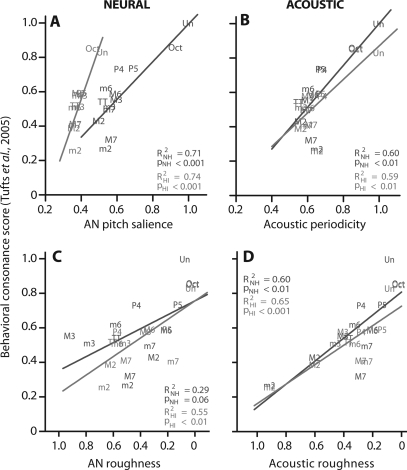Figure 7.
(Color online) Correlations between neural∕acoustic correlates and behavioral consonance scores of equal tempered chromatic intervals for normal and impaired hearing. Both AN pitch salience (A) and acoustic waveform periodicity (B) show positive correlations with behavioral consonance judgments. That is, consonant intervals, judged more pleasant by listeners, are both more periodic and elicit larger neural pitch salience than dissonant intervals. Neural and acoustic roughness (C and D) are negatively correlated with perceptual data (note reversed abscissa) indicating that intervals deemed dissonant contain a larger degree of roughness∕beating than consonant intervals. The explanatory power (R2) of each correlate reveals its strength in predicting the perceptual data: AN neural roughness < (acoustic periodicity ≈ acoustic roughness) < AN neural pitch salience (i.e., harmonicity). Of the neural measures, only AN pitch salience produces the correct ordering and systematic clustering of consonant and dissonant intervals, e.g., maximal separation of the unison (most consonant interval) from the minor 2nd (most dissonant interval). Perceptual data reproduced from Tufts et al. (2005).

